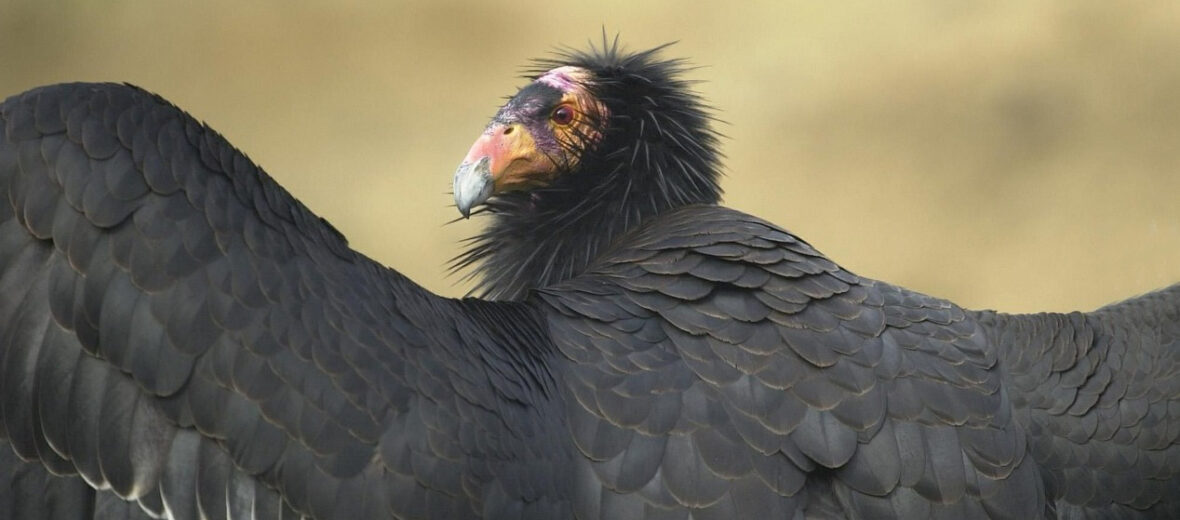
The California condor is the largest wild bird in all of North America. Their population plummeted during the 20th century due to habitat destruction, poaching, and lead poisoning from bullets in the dead animals they eat. People would shoot animals, leave them for dead, the condors would eat the carrion (dead animals), and get lead poisoning. This would lead to death, high mortality at birth, and sterility. Habitat destruction, due to agriculture and development, as well as people shooting and trapping them… their numbers dropped to near extinction.
First the Stats…
Scientific name: Gymnogyps californianus
Weight: Up to 24 lbs.
Length: Up to 4.5 feet
Wingspan: Up to 9 feet
Lifespan: Up to 80 years
Now on to the Facts!
1.) The native American name for these condors is Thunder Bird.
2.) Many people feel that vultures are dirty creatures because they eat carrion. They are actually very clean critters that constantly groom and clean themselves.
3.) Eating the dead is what they do. They are called nature’s custodians. They look for anything from a dead mouse to a dead whale. If you see circling vultures, there is most likely something dead below.
4.) There is no backwards facing talon, so they are unable to grasp prey. So what better prey to search for than things that have already died?
5.) They have a powerful immune system that keeps them from getting sick due to coming into contact with a host of bacteria, as a result of eating dead animal flesh.
But wait, there’s more on the California condor!
6.) California condors, like all vultures, are bald. The lack of feathers helps keep their heads clean, while eating rotten flesh.
7.) When they are alarmed or startled and when whey are mating, the skin on their heads turns a reddish pink color.
Did you know…?
At one time, in the 20th century, there were only 23 California condors left in the entire world! They were that close to extinction.
8.) These birds have great eyesight, like turkey vultures. So they rely on their amazing eyesight to locate food.
9.) Often times, 2 condors will grab hold of the same hunk of meat. They will begin rocking back and forth to tear the meat in half, by using their opposing body weight.
10.) Condors don’t have an actual voice box, or syrinx, as other birds do. So they make wheezing, hissing, or grunting sounds to communicate.
But wait, there’s still more on the California condor!
11.) Official statistics from the December 2016 USFWS recorded an overall population of 446! 276 are wild & 170 live in captivity.
12.) The California condor is monogamous (mates for life).
13.) California condors build their nests high on cliffs or in hollows in large trees. They don’t build a nest for their single egg.
14.) The parents tend to argue about who gets to watch the egg. When it hatches, they feed the chick via regurgitated meat from their “crop” (a food storage pouch) in their throat.
Now a Short California Condor Video!
Also, check out the Critter Science YouTube channel. Videos added frequently!
Want to suggest a critter for me to write about? Let me know here.



